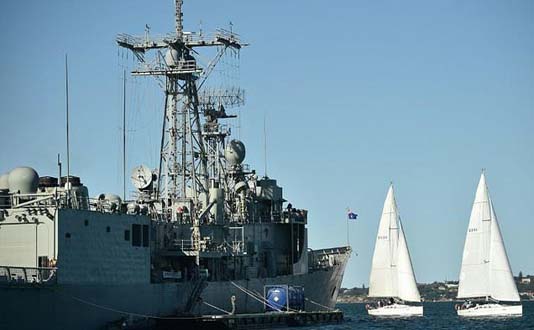SYDNEY, June 29, 2018 (BSS/AFP) – Australia awarded a $26 billion contract
to build a new generation of warships to British defence giant BAE Systems on
Friday, as the Pacific nation undertakes an ambitious naval programme in part
to counter China.
BAE’s Global Combat Ship, to be officially known as the Hunter class, beat
off competition from Italian company Fincantieri and Spain’s Navantia SA.
The frigates will be “the most advanced anti-submarine warships in the
world” and underpin the country’s security for decades to come, said
Australian Prime Minister Malcolm Turnbull.
“The Hunter class will provide the Australian Defence Force with the
highest levels of lethality and deterrence our major surface combatants need
in periods of global uncertainty,” he said.
“They will have the capability to conduct a variety of missions
independently, or as part of a task group, with sufficient range and
endurance to operate effectively throughout the region.”
A key element of the contract was that a high-level of construction must
take place in Australia, in a bid by Canberra to boost domestic jobs in the
shipbuilding industry.
The ships will be designed by BAE and built using Australian steel by the
government-owned ASC Shipbuilding in Adelaide, with 4,000 jobs created.
The company will become “a subsidiary of BAE Systems” during the build to
“ensure BAE Systems is fully responsible and accountable for the delivery of
the frigates”, before reverting ownership.
Britain said the deal was “a result of four years of intensive government
engagement”, and hailed it as a boost for its post-Brexit prospects.
“The sheer scale and nature of this contract puts the UK at the very
forefront of maritime design and engineering and demonstrates what can be
achieved by UK industry and government working hand-in-hand,” said Prime
Minister Theresa May.
“We have always been clear that as we leave the EU we have an opportunity
to build on our close relationships with allies like Australia. This deal is
a perfect illustration that the government is doing exactly that.” –
Heightened risks –
The vessels will replace Australia’s current nine ANZAC class frigates,
with the new ships equipped with a long-range cutting-edge missile defence
system to counter threats from rogue states like North Korea.
They are due to enter service in the late 2020s as the backbone of the
Australian Navy’s fleet, part of the nation’s largest peacetime naval
investment that also includes 12 new submarines and 12 offshore patrol
vessels.
The big increase in spending comes as Beijing flexes its own muscles in the
region through a military build-up in the contested South China Sea, and as
countries keep a wary eye on nuclear-armed Pyongyang.
“We are in a world with heightened risks,” said Turnbull. “We need to have
the capabilities to defend Australia, regardless of what may come.”
BAE Systems chief executive Charles Woodburn said the frigate deal
“reinforces our position as a leading designer and builder of complex
maritime platforms.
“I am proud that our world class anti-submarine warfare design and our
approach to transferring technology and skills to the nations in which we
work is expected to contribute to the development of an enduring world-class
naval shipbuilding industry in Australia,” he added.
The deal follows Canberra this week announcing a US$5.2 billion investment
to develop and buy high-tech US drones for joint military operations and to
monitor waters including the South China Sea.
French naval contractor DCNS has been selected to design and build
Australia’s new submarines at a cost of Aus$50 billion in Adelaide, beating
off competition from Japan and Germany.



